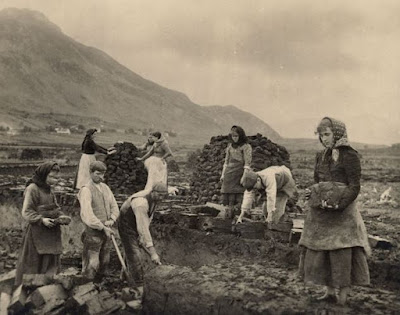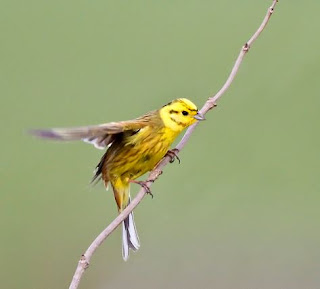A Blogging Bogger
Sitting atop a trailer load of cut turf as a child with my friend. His Dad carefully tugging us along with the tractor, on the short journey from the bog back to his family home. My friend and I acting as unofficial traffic wardens, as we commanded the cars behind the tractor, to ‘stay’ or ‘go’ with the wave of a hand.
We spent two full days loading and unloading turf from that trailer. Once the turf was unloaded it was stacked in the shed. Ready for use to keep the house warm that coming winter.
I loved every minute of it. Outside, all day, with my friend, in the sunshine, working like men, with men we aspired to be as strong as.
This is one of many memories that spring to mind when I think of bogs or turf.
Bogs and their use for fuel have a long history in Ireland. Indeed the image of turf and the process by which it is extracted from the land, turf cutting, is still used on postcards to promote an image of Ireland abroad. But it was not until later in life that I learned these bogs had another use. Sustaining some of Ireland most threatened wildlife, particularly the Curlew.
Issues around the role of bogs and specifically turf cutting in Ireland are literally more heated than that around the seasons allowed for the cutting of our hedges. That is to be expected when a natural resource has such a tangible, monetary value. Tradition too has a role to play in this subject. When both are fighting for recognition and respect it can come across badly when those that wish to seek the protection of bogs for wildlife offer money or prison in pursuit of conservation.
It might be surprising then to note that largest commercial, semi-state, turf cutter in the country, Bord na Mona has made some interesting proposals for moving away from turf as an energy resource.
Bord na Mona has been cutting turf for commercial purposes since 1946. But they have recently announced that they are looking to, ‘cease harvesting peat for power generation by 2030.’ They plan to do this by moving to alternative sources of generating energy, including wind energy, biomass, waste and recovery.
Of course, such a body would have the funds to invest in such forms of energy and indeed some like wind energy can be just as controversial as turf cutting for some. But they are progressive proposals none the less, for moving away from non-renewable sources of fuel such as turf. Away from bogs as a source of energy the possibilities for their use are endless.
Bogs then could be maintained by those that use to dig them for turf. They could become guides, ambassadors for the rich history of turf cutting that sustained their families for generations. Why not wildlife ambassadors too!? Such environments are unique to Ireland and are considered some of the best examples of bog habitat in Europe. More importantly bogs could be the saving grace for a bird close to extinction in Ireland, the Curlew.
I dont have the correct answer for any of these issues. Indeed I may be accused of being naïve about the subject. But ideas need to be proposed no matter how impossible, or tangible they may seem to be. From this more concrete proposals can be teased out and in turn allow our bogs have a legacy in Ireland that covers all aspects of their history, heritage and hope for future generations.
By Paul Gallagher
Come along to discuss these issues and more at our talk in Ballivor Community Centre, Ballivor, Co. Meath, Monday 24th of April, at 7:30pm. The speaker at our talk will be David Fallon, head of Ecology at Bord na Mona.
This will be followed by a walk with Ornithologist Franck Ar Moenner of Birdwatch Ireland Meath on Saturday the 29th of April in the Girley Bog at 10.00am – 12.pm. Meeting at the Girley Bog Car Park off the N52.



Comments
Post a Comment